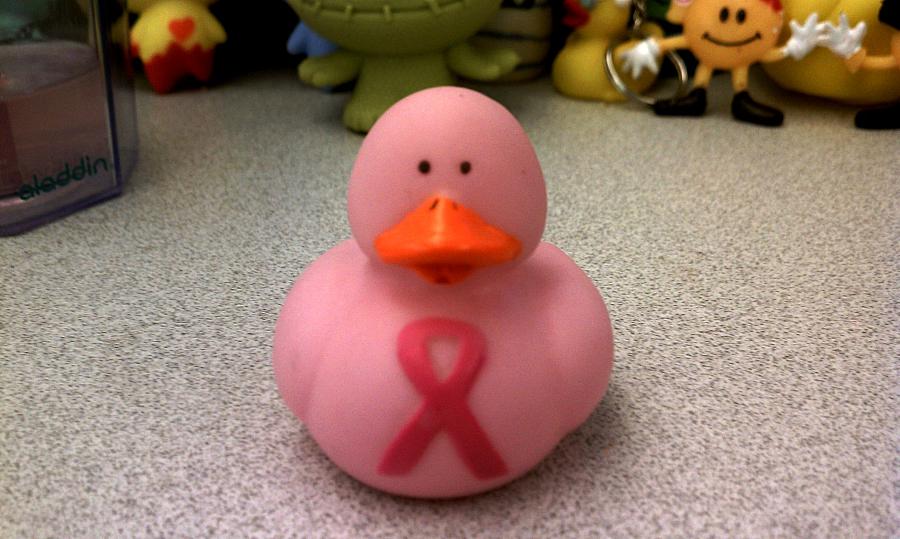Pinkwashing: Is Breast Cancer "The Bully of All Diseases"?

In 1985, October was designated as National Breast Cancer Awareness Month. The pink ribbon followed just a few years later. Breast cancer has simultaneously become the poster child of all cause marketing and the bully of all diseases.
What do we have to show for 30 years of road races, decades of awareness campaigns and billions of dollars? Frankly, not that much.
I was diagnosed with invasive breast cancer in 2006. My mom’s initial diagnosis of breast cancer was in 1987. Mine was caught early thanks to vigilant screening and better imaging.
The treatment I received in 2006 was nearly identical to that which my mom received 19 years earlier. Same surgical options with more perfected plastic surgery techniques, same chemotherapy drugs with a better understanding of how to deliver those drugs to minimize immediate side effects, same need to suppress hormones as the majority of breast cancers are fueled by estrogen.
Yes, there has been progress but when the window dressing is pushed aside, we haven’t advanced much beyond where we were in 1987. Many of the same questions that existed then remain unanswered.
- Nearly 30% of early stage breast cancers will metastasize yet we still do not know how to identify who will fall on the short side of that statistic. Metastatic disease is what causes death.
- Nearly 40,000 people in the US will die of breast cancer this year. That is a number that remains substantially unchanged for 20 years.
Pink hype creates an illusion of progress. Breast cancer is looked upon by too many as a “good cancer,” which is a heavy burden for those of us who live with the fallout of ongoing or late term effects of treatments. Rather than being viewed as women with a disease that has taken a toll on us intellectually, emotionally, physically, we are a brand, a moneymaking machine.
How can we put an end to this? Many of us with altered bodies or amputated parts abhor campaigns like the one that took place recently at a Las Vegas hotel.
There is absolutely nothing sexy about breast cancer, yet the disease seems to have spawned all sorts of awareness events where the focal point is the beauty of unscarred breasts. Not one of us with a breast cancer diagnosis walks away without visible scars. The reality of what breast cancer looks like should be a place for journalists to start when telling stories about breast cancer.
The pink ribbon is not regulated, so for the general public, buying a product festooned with the ribbon gives the buyers a good feeling that in some cases is not justified. There are products on the shelves that sport a ribbon and not one penny of the purchase price is being sent anywhere.
Just weeks ago, one such item surfaced. Blogger Acacia Warwick saw some breast cancer awareness products on the website of Lucy Activewear. Being diligent, she went hunting around the website looking for some information regarding their donation. When she found no information, she sent an email via the site. Within hours, she received a reply from the company:
“I regret to inform you that we don’t have an affiliation with any charities at this time, however we do hope to in the future.”
Outraged at this blatant exploitation, Acacia sent a second email. One of her blog readers jumped into the fray and began making phone calls. The initial blog post was published on Friday, September 7. Three days later, there was an announcement on the Lucy Facebook page and an update on Acacia’s blog. One blog and one blog reader and one wrong made right. What might have happened if Acacia hadn’t picked up the ball?
My main problem with most pink campaigns? Too many companies are not transparent. This year, if consumers stand together and refuse to buy into the hype without good information, we can change things. If reporters dig to find out the financial details of various pink campaigns, they will expose the profiteers and help steer more donations to where they can do the most good.
We must funnel more than the current 3% of research funding into saving the lives of those whose cancer is metastatic. Their lives should be among our top priorities. The Stage IV patients, many of whom are my dear friends, feel like they’ve been written off. When did it become okay to sacrifice lives? Who is telling their stories?
WE as consumers and citizens can change the conversation by asking the right questions. WE can see that this October is different from previous twenty Octobers. Pink is not the problem. We are. And we have the power in our hands to solve the problem, and you, the media, play a key role.
AnneMarie Ciccarella writes the ChemoBrain blog.
Image courtesy of Joshua Smith via Flickr.

